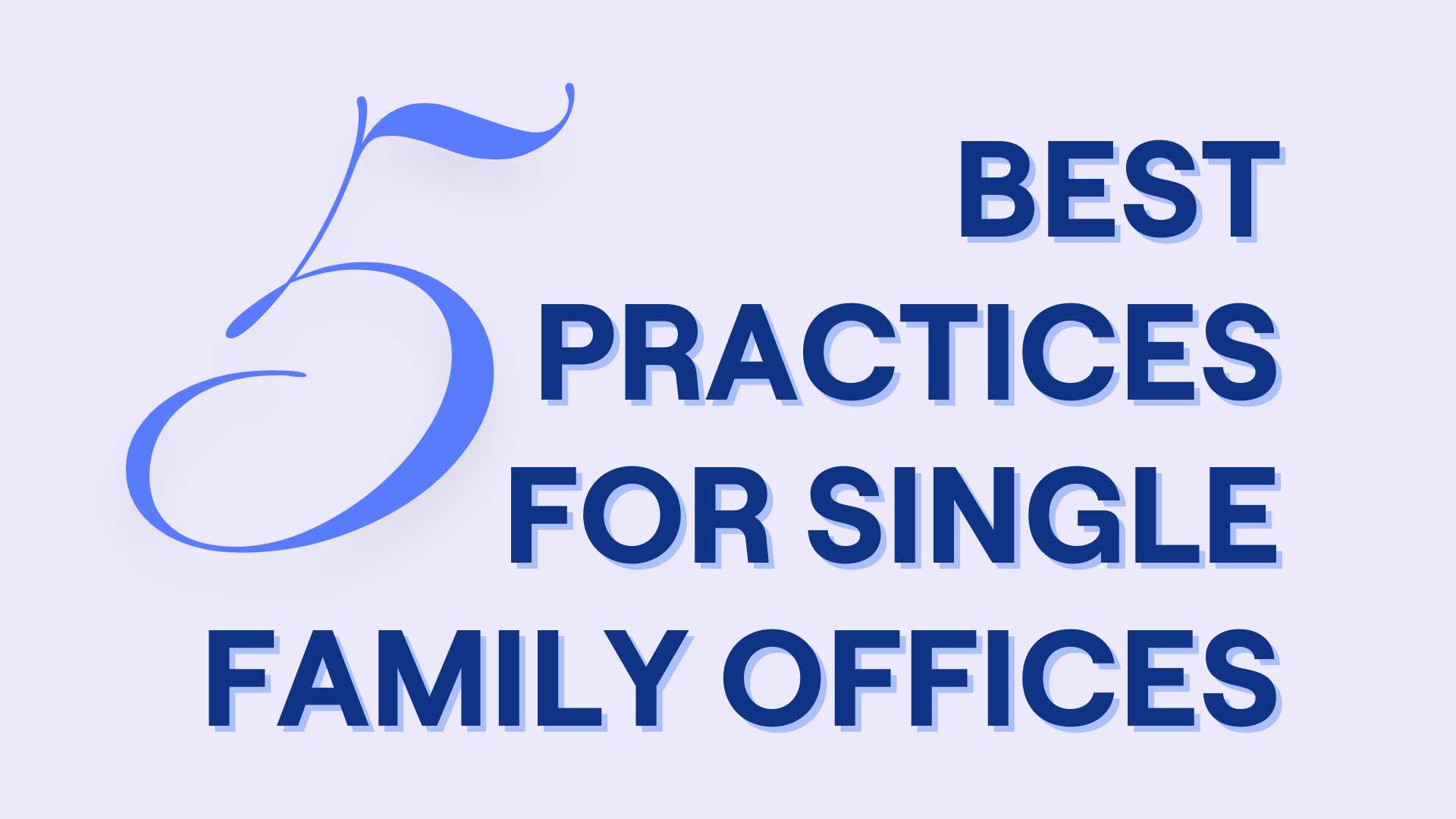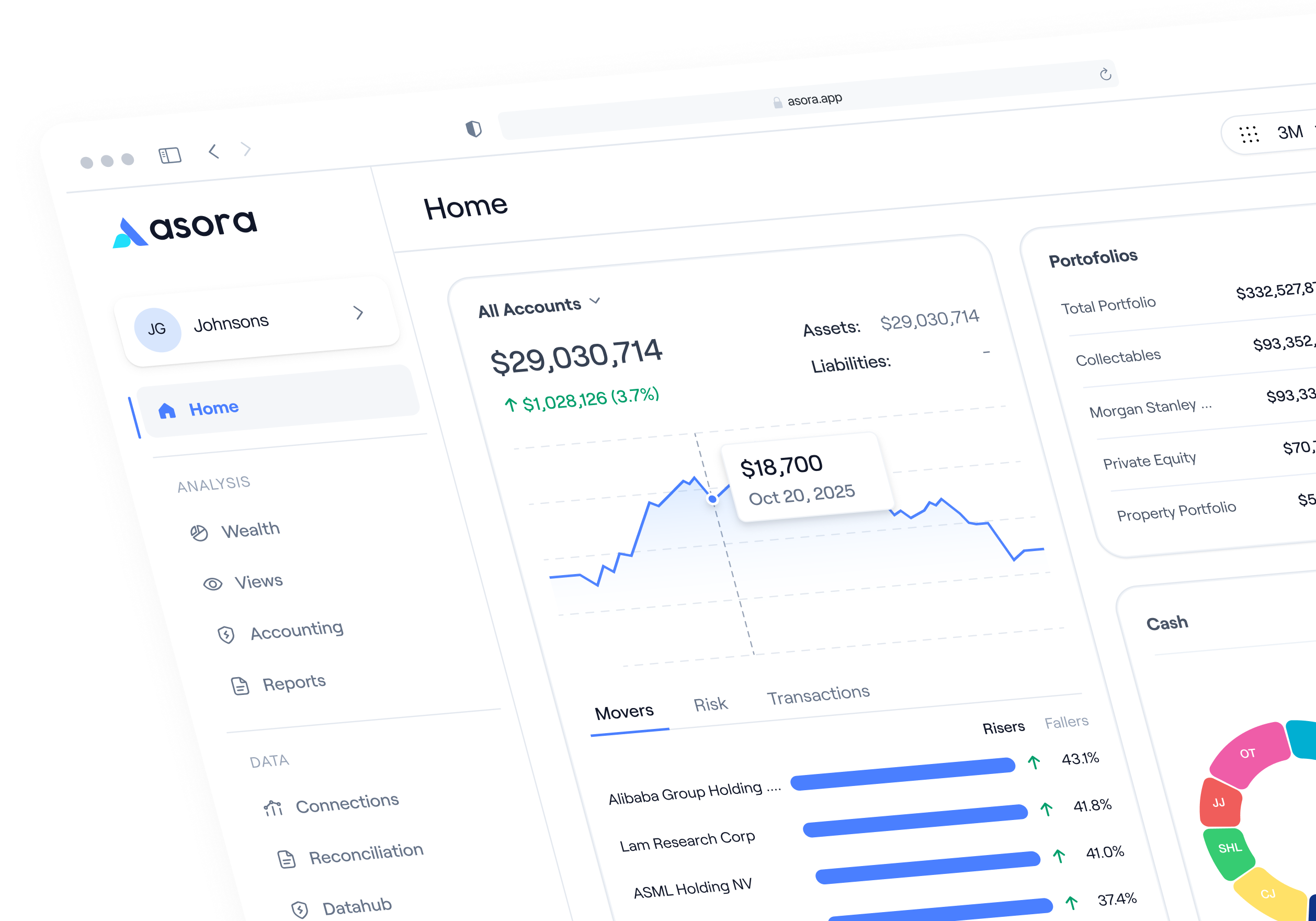Automate your family office
Schedule DemoHeading 1
Heading 2
Heading 3
Heading 4
Heading 5
Heading 6
Lorem ipsum dolor sit amet, consectetur adipiscing elit, sed do eiusmod tempor incididunt ut labore et dolore magna aliqua. Ut enim ad minim veniam, quis nostrud exercitation ullamco laboris nisi ut aliquip ex ea commodo consequat. Duis aute irure dolor in reprehenderit in voluptate velit esse cillum dolore eu fugiat nulla pariatur.
Block quote
Ordered list
- Item 1
- Item 2
- Item 3
Unordered list
- Item A
- Item B
- Item C
Bold text
Emphasis
Superscript
Subscript
Family offices, tasked with safeguarding and growing the wealth of high-net-worth individuals or families, operate in a complex financial landscape. One of the paramount challenges they encounter is the aggregation and management of data stemming from a myriad of assets spread across different locations and classes. In this blog post, we will explore the hurdles family offices face in this endeavour and discuss potential solutions to streamline the process.
Data Fragmentation Across Locations and Classes
Family offices often grapple with the issue of data fragmentation, where crucial financial information is scattered across various locations and asset classes. Real estate holdings, private equity investments, traditional securities, and alternative investments may each have their separate systems and data formats, making it hard to create a unified and comprehensive view.
Solution: Implementing a centralised data management system that can integrate and consolidate information from diverse sources can significantly alleviate this challenge. Utilising advanced technologies such as cloud-based platforms or data warehouses can enhance accessibility and data consistency.
Data Quality and Accuracy
Ensuring the accuracy and quality of data is paramount in making informed investment decisions. However, different systems and manual data entry can introduce errors, inconsistencies, and outdated information, leading to potential financial risks and mismanagement.
Solution: Family offices should invest in robust data validation processes and employ automation tools to reduce the likelihood of errors. Regular audits and data cleansing procedures can help maintain data integrity, providing a solid foundation for strategic decision-making.
Security and Compliance Concerns
With the increasing prevalence of cyber threats and stringent regulatory requirements, family offices face a constant challenge in safeguarding sensitive financial data. Compliance with data protection regulations, both regionally and globally, adds another layer of complexity.
Solution: Family offices must prioritise cybersecurity measures and adopt encryption technologies to safeguard client information. Staying abreast of evolving compliance standards and leveraging specialised software to automate compliance checks can help mitigate risks and ensure adherence to regulatory guidelines.
Lack of Standardisation in Reporting
Different asset classes often require distinct reporting formats, creating a headache for family offices aiming for a unified and standardised reporting structure. This lack of consistency can impede efficient communication both within the family office and with external stakeholders.
Solution: Implementing standardised reporting frameworks or utilising reporting tools that can accommodate various asset classes is crucial. This not only enhances internal communication but also facilitates transparent and coherent reporting to clients and regulatory bodies.
Integration of Technology and Legacy Systems
Family offices may grapple with the integration of modern technologies with existing legacy systems. Transitioning to new platforms while ensuring a smooth integration process without disruptions can be a considerable challenge.
Solution: Gradual phased migrations, where legacy systems are updated incrementally, can minimise disruptions. Investing in flexible, scalable technologies that can adapt to the evolving needs of the family office is key to long-term success.
Implementing Solutions with Family Office Software
- Centralised Data Management:
- Family office software with robust data management capabilities can serve as a centralised repository, integrating information from various sources and asset classes.
- Cloud-based solutions or data warehouses within the software can enable secure, real-time access to consolidated data, fostering collaboration and transparency.
- Data Quality and Accuracy:
- Advanced family office software often incorporates automated data validation tools to ensure accuracy and consistency.
- Features such as real-time data updates and integration with reliable data sources help maintain data integrity, reducing the risk of errors and outdated information.
- Security and Compliance:
- Family office software designed with a focus on cybersecurity can implement encryption, multi-factor authentication, and other security measures to safeguard sensitive financial data.
- Automated compliance modules within the software can assist in staying compliant with evolving regulatory requirements, minimising manual efforts and potential oversights.
- Standardised Reporting:
- Reporting modules in family office software can offer customisable templates catering to different asset classes.
- The ability to generate standardised reports effortlessly ensures clear communication within the family office and provides clients with consistent, transparent insights.
- Integration of Technology:
- Family office software designed with flexibility and scalability can facilitate the integration of new technologies with existing legacy systems.
- Phased migration plans can be seamlessly executed within the software, allowing family offices to update systems incrementally without disrupting daily operations.
Family Office Alternative Data Aggregation
The challenges faced by family offices in aggregating and managing data from diverse assets across different locations and classes are multifaceted.
However, by embracing advanced technologies, implementing robust data management practices, and staying abreast of regulatory developments, family offices can overcome these challenges.
This, in turn, will pave the way for more informed decision-making, improved client satisfaction, and sustained success in wealth management.







.png)





